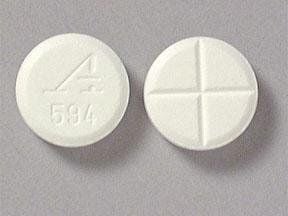This is an automatically translated article.
Dasginin is a prescription medication, with the main ingredient Pregabalin, indicated for the treatment of neuropathic pain associated with diabetic peripheral neuropathy, postherpetic neuralgia, or spinal cord injury. In addition, the drug is also indicated in the treatment of partial-onset seizures and fibromyalgia.1. What is Dasginin?
Dasginin has the main ingredient Pregabalin, which is a structural derivative of the inhibitory neurotransmitter gamma aminobutyric acid, indicated for the treatment of neuropathic pain associated with diabetic peripheral neuropathy, neuralgia. After shingles or spinal cord injury, adjunctive treatment for partial onset seizures and fibromyalgia. Dasginin is prepared in the form of hard capsules, each containing 50mg of Pregabalin.2. Indications of the drug Dasginin
Dasginin is indicated for use in the following cases:
Nerve pain regardless of central or peripheral origin. In combination with anticonvulsants for the treatment of partial seizures with or without generalization in adults. Generalized anxiety disorder. Diabetic peripheral neuropathy, postherpetic neuralgia. Fibromyalgia muscle pain.
3. Contraindications of the drug Dasginin
Dasginin is contraindicated in patients with a history of allergy or hypersensitivity to any of the ingredients.
4. Dosage and how to use Dasginin
4.1. How to use Dasginin Dasginin is in the form of hard capsules, taken orally. Before taking, patients should consult their doctor and carefully read the instructions for use on the leaflet. When swallowed whole with a glass of water, Dasginin should be taken around the time of bedtime because the drug can cause drowsiness, reduce alertness. The drug can be taken with or without food because food does not affect the absorption of the drug.
4.2. Dosage of Dasginin Adult:
Adjunctive treatment of partial seizures (should be combined with other anticonvulsants): Initial dose is 150mg/day, taken daily, then gradually increase dose every week Depending on the patient's response, the maximum dose is 600mg/day. Generalized Anxiety Disorder: Initial dose is 150mg/day, taken daily, may be gradually increased every week at an interval of 150mg/time to a maximum dose of 600mg/day. Pain due to neuritis, pain after shingles (Herpes): Recommended dose: 150-300mg/day, divided into 2-3 times. Initial dose: 150mg/day, then increase to 300mg/day within 1 week, depending on efficacy and tolerability. After 2-4 weeks of treatment, if symptoms still do not improve, increase the dose by 300mg/day, the maximum dose can be increased to 600mg/day, divided into 2-3 times. For doses exceeding 300mg/day only for people who still have pain and can tolerate 300mg/day, and use the drug under medical supervision because it can cause many side effects when used in high doses. Diabetic patients with peripheral neuropathy: Initial dose is 150 mg/day in 3 divided doses, the dose may be increased in 1 week to the maximum recommended dose of 300 mg/day orally in 3 divided doses. Increasing the dose does not add to the benefit, but many undesirable side effects occur. Fibromyalgia: Initial dose 150mg/day, increased after 1 week depending on response, maximum dose can be up to 300-450mg/day. Children: The safety and effectiveness of Dasginin have not been established in children under 12 years of age and in adolescents (12-17 years of age).
For patients with renal failure: The dose should be adjusted according to the creatinine clearance (ClCr), specifically as follows:
ClCr 30 - less than 60 ml/min: Starting at 75mg/day, maximum 300mg/day, orally divided into 2 - 3 times. ClCr 15 - less than 30 ml/min: Start 25 - 50mg/day, maximum 150mg/day, divided into 2-3 times. ClCr < 15ml/min: Starting dose of 25mg/day, maximum 75mg/day, taken once only. Peritoneal dialysis patients: An additional dose of 25-100 mg Dasginin should be received immediately after each 4-hour dialysis session. Dasginin is used as directed by your doctor. Patients should not arbitrarily buy drugs, increase or decrease the dose of oral drugs because it may cause unwanted side effects.
If the patient forgets to take a dose, take it as soon as you remember. However, if it is almost time for your next dose, skip the missed dose and take your next dose at the scheduled time. The patient should not take twice the prescribed dose at the same time.
5. Undesirable effects of Dasginin
Common undesirable effects of Dasginin are as follows:
Systemic: Peripheral edema, infection. Nervous system: Dizziness, somnolence, ataxia, headache, weight gain, dry mouth, muscle tremors On the eyes: blurred vision, double vision. Uncommon side effects of Dasginin are as follows:
Nervous system: Neuritis, abnormal thinking, fatigue, confusion, euphoria, speech disorder, attention disorder, loss of coordination confusion, memory loss or impairment, pain, dizziness, peripheral paresthesias, anxiety, depression, disorientation, lethargy, fever, hypertonia, lethargy, stupor or agitation. Systemic: Allergic reactions, edema, facial edema, bruises, itching, fluid retention, hypoglycemia. Cardiovascular system: Chest pain. Digestive system: Constipation, appetite, flatulence, vomiting, abdominal pain, gastroenteritis. Urogenital system - Genitourinary: Frequent urination and urinary incontinence, loss of pleasure, decreased sex drive. On blood: Thrombocytopenia. Musculoskeletal system: Balance disorder, abnormal gait, muscle weakness, arthralgia, myalgia, back pain, muscle spasms, myoclonic jerks, paresthesia, elevated CK enzyme, cramps, myalgia, myasthenia . On the eyes: Visual disturbances, amblyopia, nystagmus, conjunctivitis, On the ear-nose-throat: Hearing loss, sinusitis, dyspnea, bronchitis, pharyngitis-laryngitis, syndrome Rare adverse effects of Dasginin are as follows:
Abscess, acute renal failure, albuminuria, anaphylactic reactions, anemia, angioedema, speech disorder, gastritis, apnea.. .
6. Be careful when using Dasginin
When using Dasginin, patients should note the following information:
Dasginin may cause peripheral edema side effects. There is no clear distinction between peripheral edema with cardiovascular complications (eg, hypertension, congestive heart failure) and edema not due to renal or hepatic failure. If the patient has symptoms of peripheral edema (edema of the extremities), it is necessary to visit a medical facility for consultation. When Dasginin is used in combination with Thiazolidinedione (an antidiabetic drug) there is a greater risk of weight gain and edema than when using dasginin alone. Patients need to inform the doctor about their medical history and the medications they are taking to make the treatment process more effective. Dasginin may cause dose- and duration-related weight gain. However, weight gain is not associated with clinically important changes in blood pressure, but the long-term cardiovascular effects are unknown. For patients with a history of pre-existing cardiovascular disease, the drug should be used with caution because it may increase the risk of heart failure. Dasginin may increase CK enzymes. Patients should notify their doctor when they have unusual symptoms on the joints such as: pain, muscle weakness, increased pain sensitivity, especially when accompanied by fever and/or fatigue, malaise. The drug must be stopped when the above symptoms appear. Patients should not arbitrarily stop the drug Dasginin suddenly even after the symptoms are gone. Dasginin should be discontinued slowly and the dose of Dasginin reduced for at least 1 week prior to discontinuation. When the drug is stopped quickly and suddenly, symptoms of drug dependence such as insomnia, vomiting, headache, diarrhea or seizures appear. For patients with a history of drug addiction, caution should be exercised when using Dasginin. Monitor for signs of drug abuse (such as drug resistance, tendency to self-medicate, or drug-seeking behavior). For pregnant women: There is not enough research evidence on the effectiveness and side effects of the drug in pregnant women. Use the drug only under the doctor's prescription when absolutely necessary and the effect outweighs the risk factors for mother and baby For breastfeeding women: There are currently no studies on whether the drug passes into breast milk or not. are not. Mothers taking Dasginin drug, should stop breastfeeding to avoid side effects of the drug on the child Driving or operating machinery: Dasginin drug has effects on central nervous system including: Drowsiness, dizziness, can reduce both physically and mentally, caution should be exercised in subjects who drive or operate machinery, or perform other activities requiring alertness.
7. Interactions of Dasginin
Concomitant use of Dasginin with some of the following preparations and drugs may cause interactions:
Dasginin increases the concentration and effect of thiazolidinedione oral antidiabetic drugs, central nervous system depressants, Methotrimeprazine , selective serotonin reuptake inhibitors. It is necessary to adjust the dose of the drug to avoid unwanted side effects. Droperidol, Hydroxyzin, Methotrimeprazine increase the drug concentration of Dasginin when used concurrently. Ketorolac, Ketorolac (nasal drops), Ketorolac (systemic route), Mefloquin reduce the concentration and effect of Dasginin drug when used concurrently. Avoid taking Dasginin with alcohol because alcohol increases the effect of Pregabalin on the central nervous system. When Dasginin is used in combination with Troglitazone, Rosiglitazone Pioglitazone, Lobeglitazone, Netoglitazone may increase the risk or severity of weight gain and increase the risk of peripheral edema. The therapeutic effect of Dasginin may be reduced when used in combination with Mefloquine. Dasginin is commonly indicated for the treatment of neuropathic pain associated with diabetic peripheral neuropathy, postherpetic neuralgia or spinal cord injury, as adjunctive therapy for partial onset seizures, and epilepsy. fibromyalgia. Because this is a prescription drug, patients should not use it on their own, but need to consult a doctor before using to ensure safety for health.













